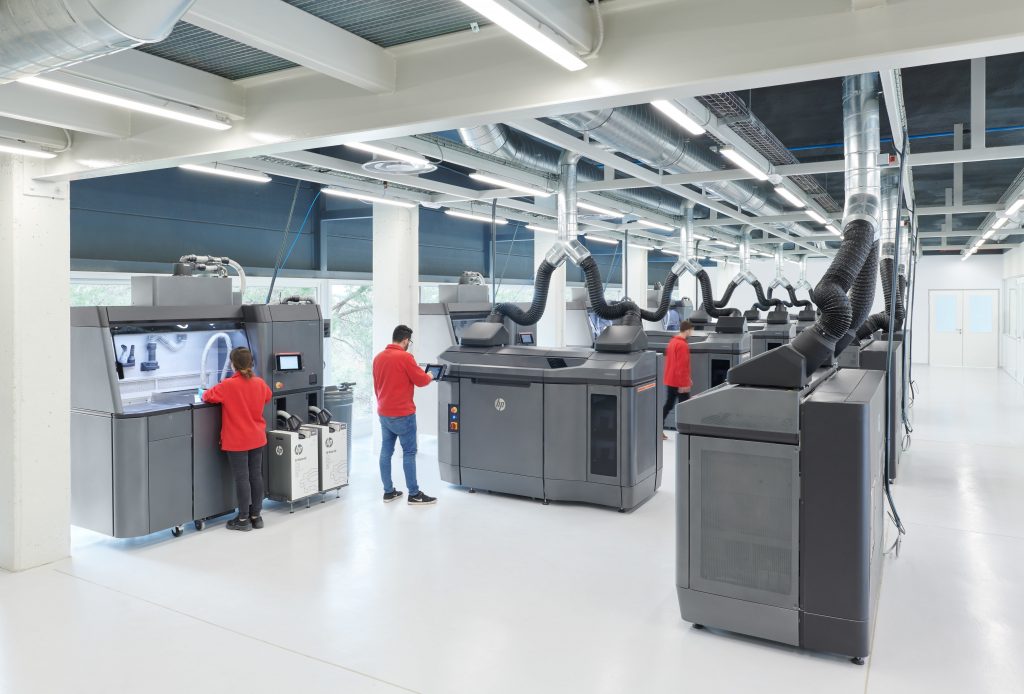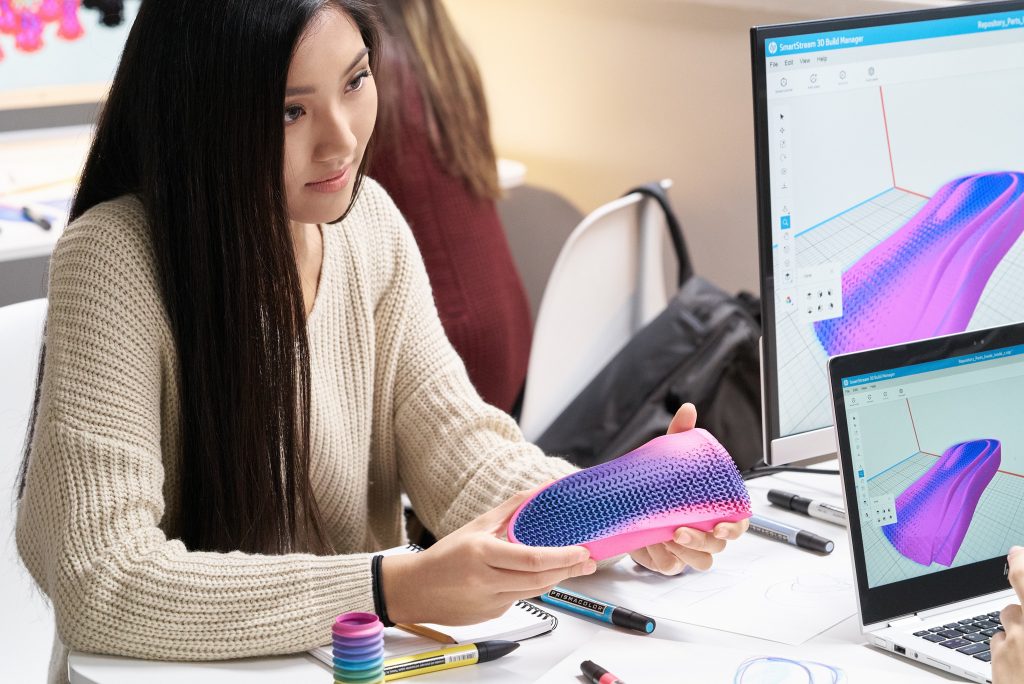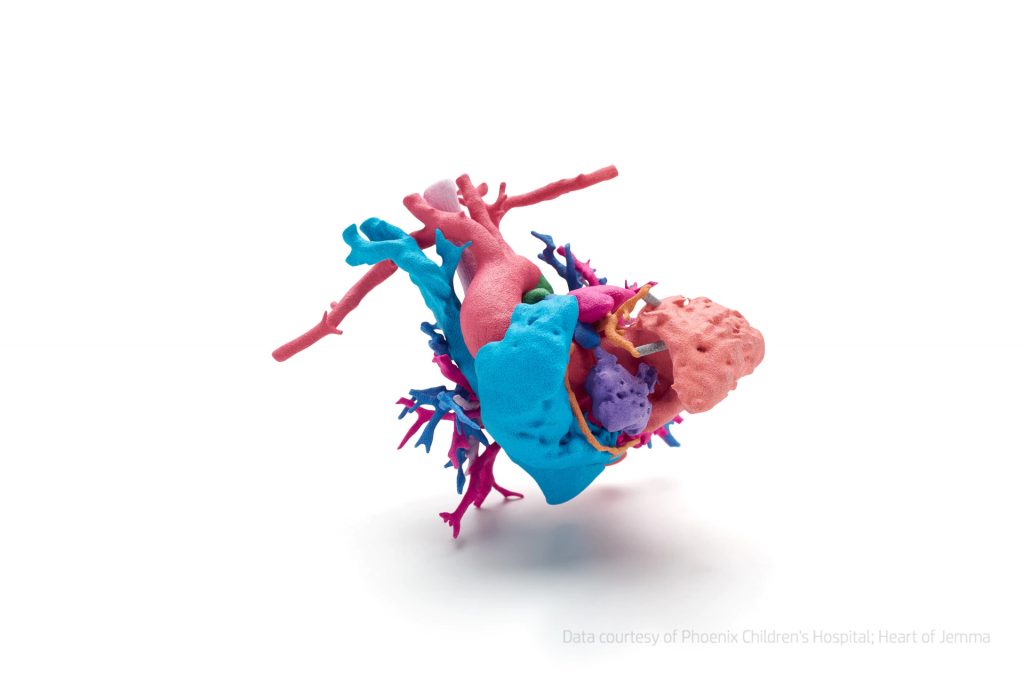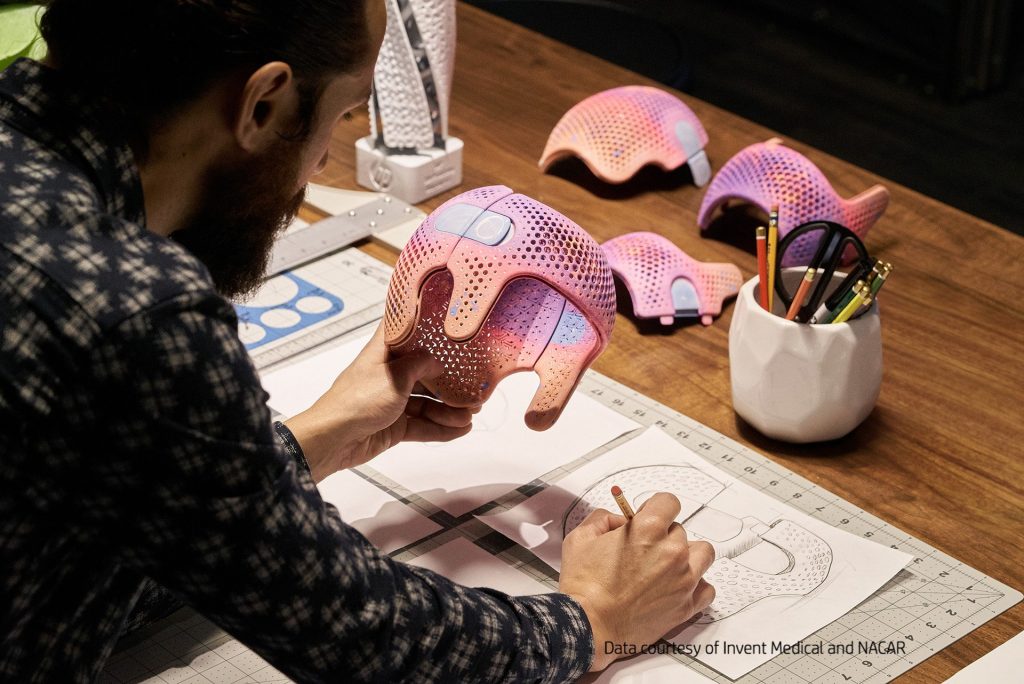Nick Lazaridis is the President for EMEA at HP Inc., managing operations, growth, and their financial performance across the region. Before that, he led HP’s Asia-Pacific and Japan region.
HP Inc. reinvented its business in November 2015 and, today, it is a Fortune Global 100 company operating in more than 170 countries with about 50,000 employees. It creates leading-edge printers, PCs, and mobile devices, and provides technology solutions and services around the world. It’s more than just a tech firm: its vision is to create technology that makes life better for everyone, everywhere.
We were delighted to speak with Nick about his formative experiences at HP Inc., his top advice on leading teams across a diverse region as an executive, and an in-depth look into 3D printing.
What experiences brought you to where you are today?
I’ve been fortunate over the course of my career to have lived and worked in Australia, Singapore, Japan, the United States and China. My experiences have taught me to truly appreciate culture and diversity. These days, I’m based in Geneva - but I’m originally from Australia, where I studied at the University of Wollongong. More recently, I received an honorary doctorate from the International University in Geneva and delivered a commencement speech for this year’s graduating class – a humbling and rewarding moment.
It’s been almost three years since HP’s separation from Hewlett Packard Enterprise. Would you say the impact on HP Inc. has been positive?
Absolutely. It’s made us leaner, faster, more focused, and better placed to compete in a rapidly changing global economy. It has accelerated our innovation and allowed us to create our best-looking and best-performing devices ever. It also enabled us to invest and grow faster. We acquired Samsung’s billion-dollar printer business in 2017, which wouldn’t have been possible before the separation, and we regained our position as the world’s leading PC producer – just two years after separation.
As EMEA President, how have you found leading a team through this enormous change across a diverse region?
Driving change on that scale requires a strong and motivated team behind you. To foster that spirit, I’ve tried to stick to five key leadership principles.
- Number one: trust people. Leading and inspiring people means trusting them 100%, and making sure they know you’ve got their back.
- Two: don’t micro-manage. Allow your team to make decisions – and mistakes. That’s the best way for them to learn.
- Three: learn from failure. Think like a start-up: take risks, and learn lessons on the occasions when they don’t come off; fail fast, learn fast.
- Four: share the glory. Successes are team achievements. Make sure people know that, and give them opportunities to show their value.
- Five: plan for succession. Be aware of who’s ready to step up. Giving people the opportunity to make decisions will show you whether they’re up to the challenge, and to further grow and develop themselves. You have to optimise talent - get the mix right. Know when to promote internally, and when to hire in external skills.
Additionally, I always look for disengagement, especially during periods of change. Spending time with your team will help you spot signs of disaffection.
Can you tell us about the ‘megatrends’ that HP tracks?
At HP, we carefully monitor four megatrends: long-term, socio-economic developments, with far-reaching implications for all aspects of global society.
The first is demographic change. Generation Z is coming to the global workplace–all 2.6 billion of them–and they’re different. They’ve grown up in the digital era and are hyperaware of the challenges facing the world. More than three quarters believe that ‘doing good’ should be central to their work.
The second is rapid urbanisation. As the world’s population swells–to 8.5 billion by 2030–people will be drawn in their millions to cities, seeking better economic and life prospects. McKinsey predicts that by 2025, urbanisation will add 1.8 billion consumers to the global marketplace.
Thirdly, hyper-globalisation. Our lives and work are becoming increasingly interconnected. As such, digital platforms and ecosystems are now the key to success – which makes digital security more important than ever.
Finally, accelerated innovation. The pace and breadth of innovation has become exponential. Emerging technologies like AI, IoT, and 3D printing promise richer consumer experiences, and new models of production and distribution.

HP’s Jet Fusion 4210 3D printer fleet for industrial 3D manufacturing.
How are these insights informing HP strategy, today and in the future?
Shaped by these megatrends, HP identifies a three-tier strategy. The first is to focus on our core – PCs, including gaming PCs and printers, where we aim to accelerate in specific market segments within these businesses. Second is growth – this includes business copiers and the analogue-to-digital transformation of commercial print, where we have opportunities to deliver more value than competitors. Third is the future – 3D printing (which is really about disrupting traditional manufacturing processes), and virtual and blended reality, which we’re making big bets on as they’re set to change the world.
You mentioned 3D printing. Can you tell us about HP’s significant investment in the sector that promises to become an alternative to traditional manufacturing processes?
We believe 3D printing (specifically, additive manufacturing) will go much further than that. It’s set to turn the world’s $12 trillion manufacturing sector on its head. 3D printing localises industrial production, allowing goods to be made on demand and on the spot. This challenges the existing landscape of complex, costly, and rigid supply chains, as well as the need to ship components and finished products all over the planet. It also promotes rapid innovation and dramatically accelerates speed to market.

Full-colour applications are enabled by HP’s 3D printing technology.
How can the manufacturing sector accelerate the transition to 3D printing?
The industry needs to unlock a set of three basic enablers and three important accelerators for 3D printing to come to full maturity. In terms of enablers, 3D printing capabilities must be available, enough to displace current manufacturing methods. They have to be as cost-effective as current production methods, and a critical mass of applications is required, which demands a greater breadth of printable materials.
Then in terms of accelerators, we need new design capabilities to take advantage of the vast potential of 3D printing, new supply chains designed for distributed production, and new standards policies and regulations – to govern the new manufacturing paradigm.
However, it’s not just down to manufacturers to achieve this. The global 3D printing ecosystem needs to come together. Governments, industries, and businesses must collaborate to put the enablers and accelerators into place, and truly unleash the power of this thoroughly disruptive technology.
What are your predictions for the future of 3D printing?
On the materials front, the most important development to the future of 3D printing will be the ability to print metal. At HP, we’re very excited about the rise of metals printing. We’ve just announced the launch of HP Metal Jet: a breakthrough in high-volume, 3D-printing technology for production-grade metal parts. HP Metal Jet will deliver 50 times more productivity – for significantly less cost – than other 3D printing methods. It is already being deployed by leading manufacturers such as Volvo and GKN.
Then looking at the bigger picture, the sustainable impact of 3D printing is potentially vast. 3D printing reduces CO2 emissions by diminishing the need for tooling in pre-production, for sub-assemblies in mass production, and for the distribution of finished goods. A study by HP and A. T. Kearney found that it could cut carbon emissions by over 525 million tonnes by 2025.

This full-colour model is a heart of a young girl named Jemma with a complex heart defect; the heart was printed using HP’s new Jet Fusion 300 / 500 3D printer to help surgeons at Phoenix Children’s Hospital prepare, select the best surgical path and explain the procedure to Jemma’s family. Data courtesy of Phoenix Children’s Hospital; Heart of Jemma.
The sustainability point is interesting. Beyond 3D printing, what is HP doing to help the planet and its population?
We believe that businesses must take their impact on the world – and the people we serve – seriously. It’s not just the right thing to do; it also makes business sense. Operating sustainably drives innovation, growth, and creates more robust organisations.
That’s why each year, HP publishes our Sustainable Impact Report, which monitors our efforts to make life better for everyone, everywhere. Our latest report highlights how we’ve managed to cut greenhouse gas emissions from our global operations – they’re down by 35% since 2015, and in 2017 alone we recycled 99,000 tonnes of plastic from more than 3.8 billion ink and toner cartridges.
Achievements like these saw HP ranked number 5 on Barron’s 100 Most Sustainable Companies list this year.
But sustainability means more than safeguarding the environment; it also means ensuring the fair treatment of people and communities. Where our employees are concerned, fair treatment begins with an open and inclusive culture. Our commitment to diversity and inclusion starts at the top of the organisation. HP’s Board of Directors is one of the most diverse in the global technology industry, and as our latest Sustainable Impact Report outlines, we increased the proportion of women in our leadership teams by almost a third last year. What’s more, we rolled out unconscious bias training globally, including for more than 300 senior leaders in 32 countries.
Of course, treating people fairly goes much further than our relationship with our staff. We work to unlock opportunity and to support those in need wherever we can. For instance, our aim is to reach more than 15 million people with the HP World on Wheels (WoW) program by 2022. WoW’s internet-enabled, mobile learning labs help provide digital literacy and entrepreneurship training in communities where gaining such skills can be challenging.
Looking after people, communities and the planet is what it means to be a truly sustainable organisation – which in 2018, is the only way to be.

HP’s Jet Fusion 300 / 500 series is ideal for small-to-medium-sized product development teams, design firms, universities and research institutions.
How will the Internet of Things affect your business?
IoT plays an important role in ensuring that our customers have the technology they need, when they need it. A good example of this is our Instant Ink replacement service, which uses IoT technology to monitor the ink in customers’ printers. We send them new cartridges when their ink is running low, so the frustration of running out at a crucial moment becomes a thing of the past.
However, we can’t embrace IoT technology without considering the security implications. In fact, device security generally is a business-critical issue for all organisations.
The devices we use – laptops, printers, and smartphones – have become the latest front in the cybersecurity battleground, and many businesses have thousands of such devices deployed across the globe at any given moment. Cybersecurity is a disruptive force. If you have the security you need, it keeps your business running, and protects your customers. But if not, the damage to your operations and reputation can be untold. Business leaders are expected to spend more than $90 billion on security protection of their organisations in 2018 alone.
Meanwhile, the threat landscape is always evolving. The funding piling into cyberattacks has exploded, whether from organised criminals or nation states. Attack capabilities are becoming more available, more broadly and more quickly than ever before. It’s no longer a case of if you will be attacked, but when.
So how is HP helping its customers to meet this cybersecurity challenge?
All HP devices are designed for what we call cyber-resilience. Cyber-resilient devices aren’t just protected from cyberattacks; they can identify them when they happen, and self-heal if breached. Achieving that sort of security means building in hardware-enforced security from the lowest level of firmware, working up through the software stack and the management solutions.
From security to 3D printing, the technology challenges and opportunities for the global economy are diverse. How can we prepare for the future?
People can be scared of future technology, worrying that their privacy will be intruded, their jobs will become obsolete, or that human interaction will be lost. In fact, we are working very hard to make it the opposite of this; the future brings hope and new opportunity like never before, but we must prepare for it. Upskill so we can take on the new jobs of the future, whilst never losing creativity and diversity of thought.
When you look at the evolution of chatbots, deep-learning AI, self-driving vehicles, or advanced factory robotics, we have to be realistic - many jobs that are based on a routine will be automated in the future. That’s as true for factory work as it is for data analytics at a bank. We have to be ready. Preparing the workforce for a technology-enabled future will mean ensuring that people have the necessary STEM skills. And it will mean nurturing a generation of engineers capable of embracing the 3D-printing revolution.
The tech industry has a big responsibility in this regard. At HP, we’re doing our bit through our Learning Studios Programme, which is re-imagining the school classroom as a space where students design, create and invent using the latest technology innovations. Meanwhile, HP Life, our free online learning platform, gives individuals the chance to improve their business, IT, and digital skills.

HP Multi Jet Fusion technology features voxel-level control and is changing the way the world designs and manufactures. Data courtesy of Invent Medical and NACAR.
So finally, what advice would you give to young people entering the workforce in the coming years?
I had to reflect on this question for the speech I gave this summer to the graduating Class of 2018 at the International University of Geneva. Having thought about what’s served me well during a quarter century as a business leader, here’s what I felt I could pass on to those about to start their careers:
- Be trustworthy. Be authentic, accountable, and respectful to the people you work with. Keep your commitments and perform consistently.
- Be brave. Don't wait for permission – go ahead and try things out and make mistakes along the way. That’s how we learn and improve.
- Be kind. Show compassion, consideration and decency in your dealings with people. Be generous with your time. Make sure you give back to your family, colleagues, and community.
- Be smart. Never stop learning. Learn from everybody in your personal and professional life, and from every experience you have.
- Be wise. Make good decisions, not just popular ones. You’re doomed to fail if you try to please everyone all the time.
- Expand your relationship horizons. You can’t overestimate diversity – a single perspective is never enough. The best people to challenge and develop you are those who are different from you.
- Be a leader. Work on your leadership qualities throughout your professional and personal life. Develop the ability to create and articulate a vision, and to motivate people to deliver it.









